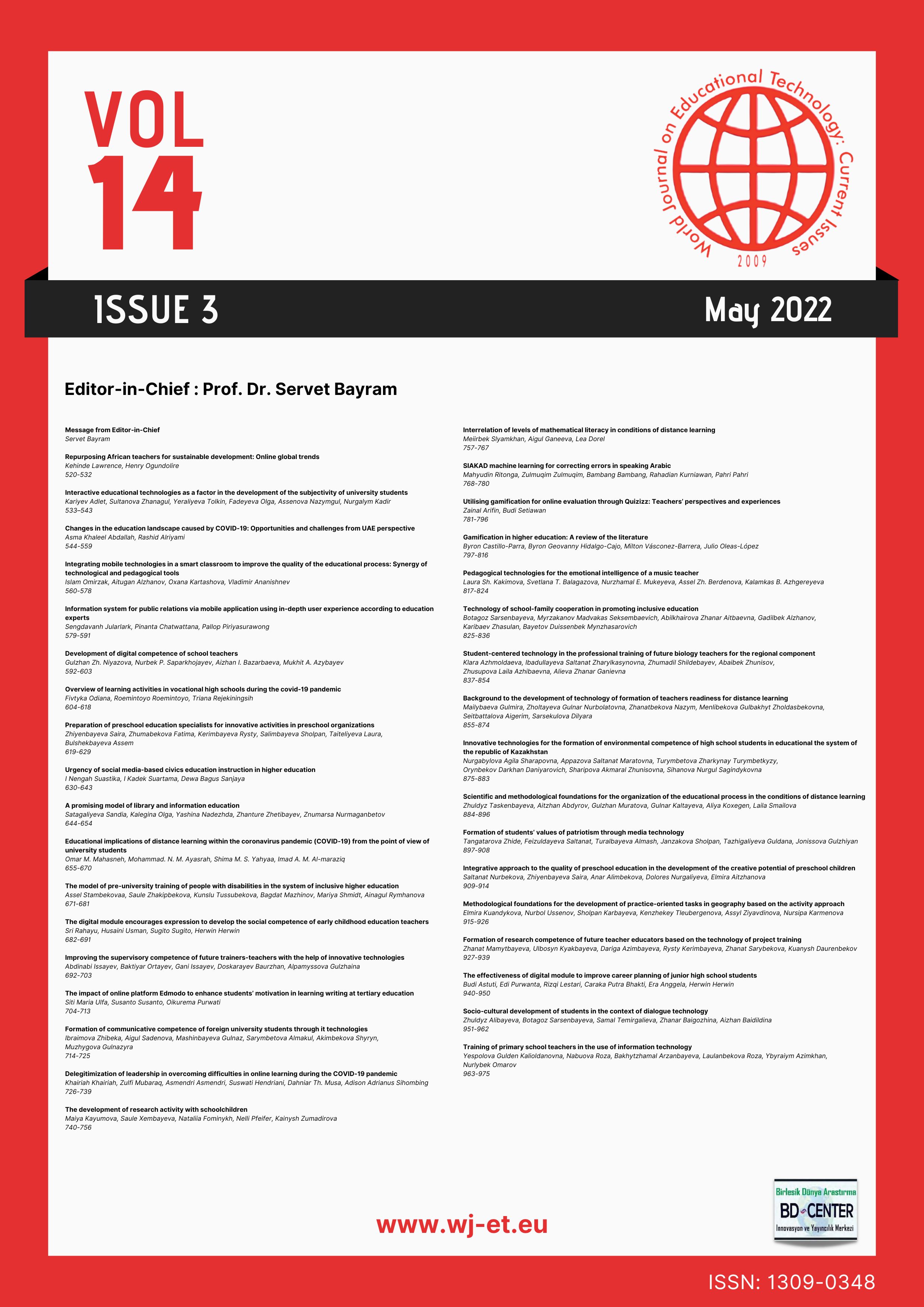Formation of communicative competence of foreign university students through it technologies
Main Article Content
Abstract
The aim of this research is to reveal the views of foreign students in order to establish their communicative competences through technologies. This research was conducted with the phenomenology pattern, one of the qualitative research designs. Study data were collected through semi-structured interview forms prepared separately for each of the foreign students. The sample of the study is 40 foreign students studying at universities in Kazakhstan in the 2022-2023 academic year and voluntarily agreeing to participate in the research. Apart from the questions asked to determine the demographic characteristics of the foreign students participating in the research, such as their gender and department of education, two closed-ended and two open-ended questions were asked about the formation of the communicative competences of foreign students. While preparing the research questions, the literature was used and the questions were presented to the expert opinion and took their final form. As a result of the research, among the answers given to the question asked about the difficulties foreign students face in communication; language is complicated, adjustment problems, loneliness, thinking of doing wrong. Among the answers given to the question regarding the determination of technology use in the formation of foreign students' communicative competencies; podcasts, discussion/chat rooms, instant messaging, blogs and wikis, social networks answers.
Keywords: Foreign university students, technology, communicative competence
Downloads
Article Details

This work is licensed under a Creative Commons Attribution 4.0 International License.
World Journal on Educational Technology: Current Issues is an Open Access Journal. The copyright holder is the author/s. Licensee Birlesik Dunya Yenilik Arastirma ve Yayincilik Merkezi, North Nicosia, Cyprus. All articles can be downloaded free of charge. Articles published in the Journal are Open-Access articles distributed under CC-BY license [Attribution 4.0 International (CC BY 4.0)].
Birlesik Dunya Yenilik Arastirma ve Yayincilik Merkezi (BD-Center)is a gold open-access publisher. At the point of publication, all articles from our portfolio of journals are immediately and permanently accessible online free of charge. BD-Center articles are published under the CC-BY license [Attribution 4.0 International (CC BY 4.0)], which permits unrestricted use, distribution, and reproduction in any medium, provided the original authors and the source are credited.
